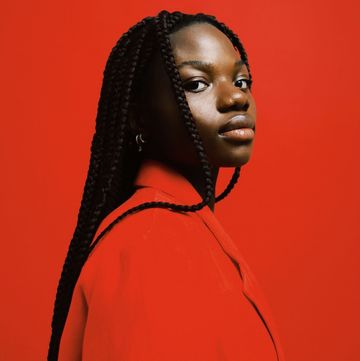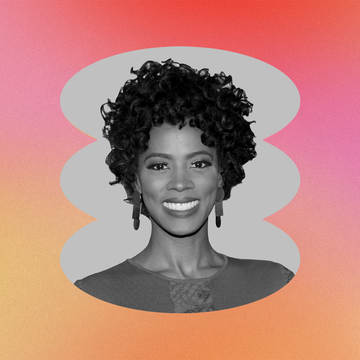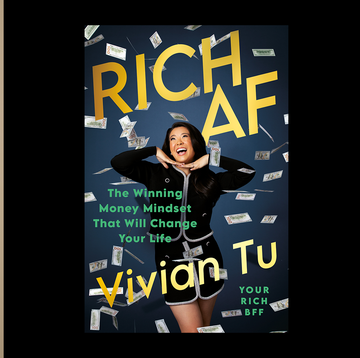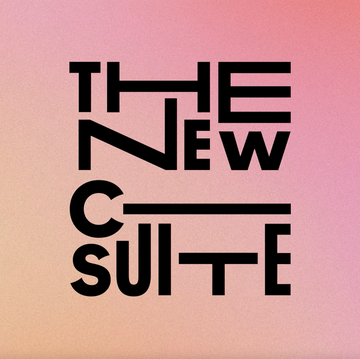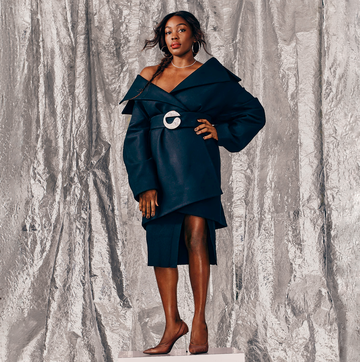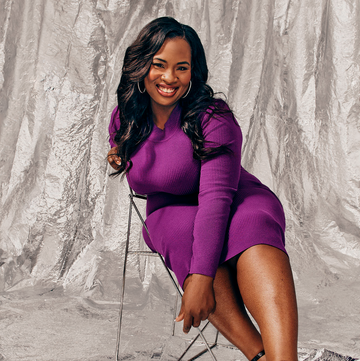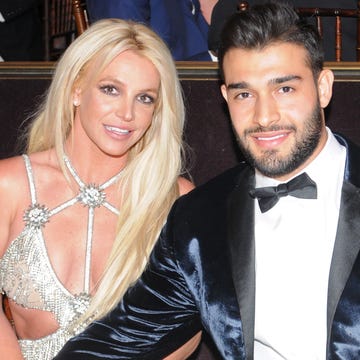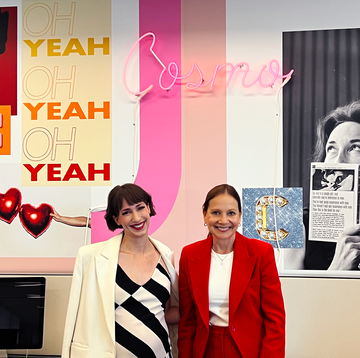Kristina Cullen, owner of Seattle-based jewelry design company Open the Cellar Door, never planned on becoming a small business owner. But after her arts degree didn't get her the museum position she'd always dreamed of, she spent more than a decade stuck in retail jobs. Here's how Kristina got unstuck — and how she built a full-time career out of crystals, salvaged metals, and animal bones. (Seriously.)
When I was a kid, I wanted to be an archaeologist. I spent hours digging around in my backyard, finding rocks that I'd convince myself were fossilized dinosaur bones. I was not interested in princesses and glitter; I was drawn to weird things and to the idea those things were beautiful in their own way.
I moved from my hometown in Cleveland to attend Indiana University, where I studied art history. I had a really clear picture of what my life would be like after college graduation — by 26, I'd be living in New York City in a fabulous loft and would be an assistant curator at someplace like the Metropolitan Museum of Art in the Egyptology wing. I moved to Los Angeles with my boyfriend right after I graduated and figured it'd be easy to find some sort of art- or museum-related job.
But it wasn't. I soon realized I'd made a really crucial mistake by not studying abroad or getting an internship while I was an undergraduate. I applied for dozens of jobs at galleries, but even entry-level positions wanted you to have had some professional experience in the art world. I got discouraged after a few weeks of rejections and got a job at Urban Outfitters instead. Even though I was disappointed to not be working an art job, there were things I enjoyed about working at Urban. I liked that the work was fast-paced, since I'd rather have a million things to do than stand around all day, and loved my coworkers. But it was grueling work and often pretty thankless. I promised myself I'd stay in Los Angeles for two years, regardless, to give myself enough time to figure out whether I truly liked living there. But Los Angeles just wasn't for me. My family lived in Seattle when I was a baby, and I liked the idea of moving back, so I left L.A. almost exactly when my self-imposed two-year trial period was up.
It wasn't that I abandoned my desire to work in the art world, but when I moved to Seattle, retail was what I knew, and so I stuck with it. I had enough experience to work in visual merchandizing for Urban Outfitters in Seattle for a while, creating store layouts and displays, but eventually, I moved on to Crossroads, a retail chain that buys and sells used and vintage clothing. My boyfriend of eight years and I had recently broken up, and I needed a change. Crossroads was a company I was familiar with and drawn to because of the buy/sell/trade concept that drove the business. Because of my experience at Urban, I came into Crossroads as a manager — at one point, I was actually managing two separate locations in Seattle.
There were definitely things I liked about working at Crossroads. The thrill of opening a bag of someone's items they brought in to sell was intoxicating, like a treasure hunt. We definitely didn't always find treasures, but some of the buys made the others worth all the digging and hard work. I got to travel to San Francisco to meet with other store managers and share ideas for making the company as a whole better. But the longer I stayed at Crossroads, the more I started to feel like it was just another unfulfilling retail job. The fact that we bought used clothes made it even more challenging because frequently, people would come in with clothes to sell because they were desperate for money. When I'd turn down buys or offer people less money than they thought they deserved, people would get aggressive. I got cursed at and threatened a lot.
As manager, I'd often walk deposits down the street to the bank, and one morning while I was making a bank run, I was attacked at knifepoint by a mentally ill person. I wasn't hurt, and the money wasn't stolen, but it was still one of the most traumatic things I've ever experienced. While the attack was really scary, I was already determined to get out of my Crossroads job because I'd simply had enough. I'd been there for eight years, and I was tired of thinking, Oh, god, I'm still working here, every time one of my birthdays rolled around. I gave a month's notice a couple of weeks after the assault.
I didn't have a clear picture of what I wanted to do next. For several weeks, I hung around my apartment in my pajamas, reading and relaxing and trying to clear my head. I was able to take time to consider my next step because my husband, who I met and married in Seattle, had recently gotten a good job, thanks to the financial support I gave our household while he was going to school. It wasn't enough to support us both indefinitely, but we agreed that it was time for me to figure out what I wanted to do.
I didn't have the goal of starting a small business right off the bat — aside from a few random necklaces in high school, I'd never really made jewelry before — but I realized that the things I was naturally drawn to looked cool together, and I figured I could at least make jewelry for myself, since my clothing and accessories budget was extremely limited now that I was unemployed. I started randomly ordering things on eBay: old rusty farm equipment, crystals, even animal bones.
I made a few pieces, and when I wore them, I got compliments from friends, and sometimes even strangers. I realized that there was a good chance I'd be able to translate those compliments into sales, and so I started making more and more pieces. I had no clue what I was doing — I'd sit at my drafting table and watch YouTube tutorials about basic jewelry making or about random subjects specific to the type of materials I was interested in, like how to get rust off of iron or how to tell if bones for sale on eBay were ethically sourced. I officially founded my business, Open the Cellar Door, in 2013, and dove in to creating jewelry centered around antlers, bones, teeth, crystals, and stones. I mix in manmade materials like filigree or salvaged metals. My overall aesthetic strives to be a perfect balance between spooky and beautiful, and I personally hand-make every piece I sell.
Around the same time as I opened my Etsy store, Ghost Gallery in Seattle, which is run by a close friend of mine, offered to let me sell some of my pieces there, which helped me connect with customers locally. I got an early, lucky break when Urban Outfitters did a special project to promote handmade jewelry; one of their merchandizers recommended my work to the jewelry buyers. They sold my pieces online as a part of a special collection, and they sold them in Seattle stores too, where they sold out almost immediately.
Etsy has continued to be an important part of my business plan, and Instagram is an indispensible marketing tool, but I sell the most in settings where people can touch my work, try it on, and ask me questions about it, like trade shows, craft fairs, and farmers' markets. I say yes every time someone asks me if I'd like to have a booth at an event of theirs, and I say yes to a lot of requests that only give me exposure, not money, like loaning pieces out to be in a photo shoot or a fashion show. I have at least one market event scheduled for every single week this summer, and to keep up with demand, I often work more than 60 hours a week — and feel guilty if I work less.
For now, I'm the owner, operator, CFO, and sole employee, but it's my goal to one day be designing pieces and overseeing the big picture of the business, with employees to actually construct pieces and handle administrative tasks. It's crazy to look back at how my business has expanded in a relatively short time: In 2013, during my first month, I only sold a couple of pieces; within six months, I'd sold maybe 50. By now, I've sold thousands of pieces, which on average can cost anywhere from $20 to $175, and my 2015 sales are already up 75 percent compared to 2014's.
I have a profitable business. I have health insurance thanks to Obamacare, and no business debt, as a result of me starting very small and expanding very slowly. And best of all, I never wake up in the morning dreading the work ahead of me that day.
Follow Lauren on Twitter.


